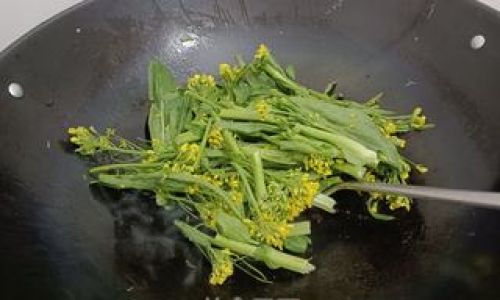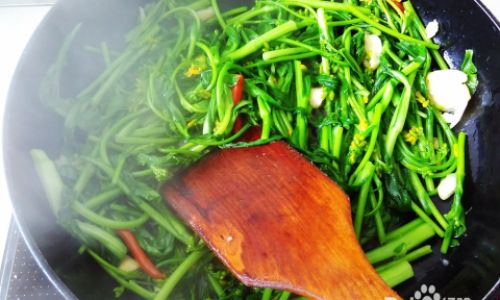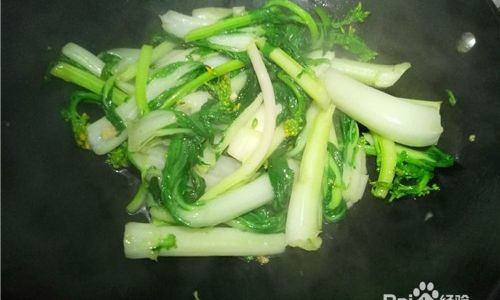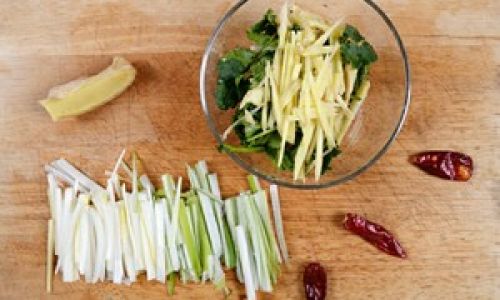Introduction
Rapeseed flowers, commonly known as canola flowers, are not just a sight to behold with their vibrant yellow hues that paint the landscapes during spring. These flowers, once they mature into seeds, offer a wealth of culinary possibilities that extend beyond their visual appeal. From traditional uses in various cuisines to modern innovative recipes, rapeseed flowers (or more accurately, their seeds, which are processed into rapeseed oil) have found their way into kitchens worldwide. While the flowers themselves are not typically eaten directly due to their bitter taste and potential health risks from certain plant compounds, the oil derived from their seeds is a staple in many diets. This article delves into the various culinary applications of rapeseed oil and explores some creative and traditional ways to incorporate it into your meals, offering a comprehensive guide to the delightful world of rapeseed-based cuisine.
The Versatility of Rapeseed Oil
Rapeseed oil, also known as canola oil, is extracted from the seeds of the rapeseed plant through a process that involves pressing and refining. It has become a popular choice among chefs and home cooks alike due to its neutral flavor, high smoke point, and health benefits. Unlike other oils, which may have strong flavors that can overpower dishes, rapeseed oil allows the natural flavors of ingredients to shine. Its high smoke point, around 400°F (204°C), makes it ideal for high-temperature cooking methods such as frying, sautéing, and stir-frying.

Moreover, rapeseed oil is rich in monounsaturated and polyunsaturated fats, particularly omega-3 fatty acids, which are beneficial for heart health. It also contains a low level of saturated fats and is cholesterol-free, making it a healthier alternative to some other cooking oils. These nutritional benefits have contributed to its growing popularity in health-conscious diets.
Traditional Uses in Cuisine
-
Asian Cooking
Rapeseed oil’s neutral taste and high heat tolerance make it a perfect fit for Asian cuisines, where stir-frying and deep-frying are common cooking techniques. In China, rapeseed oil is often used in stir-fries, dumplings, and noodles, adding a subtle richness to dishes without overpowering their flavors. Similarly, in Japan, it is used in tempura batter, providing a crispy exterior to seafood, vegetables, and other ingredients.
Korean cuisine also embraces rapeseed oil, particularly in dishes like bibimbap, where it is used to sauté vegetables and meats before being mixed with rice and topped with a fried egg and gochujang (chili paste). Its mild flavor allows the diverse array of flavors in Korean dishes to harmonize beautifully.
-
Indian Cooking
In Indian cuisine, rapeseed oil is known as mustard oil or sarso ka tel. While traditional mustard oil has a stronger, pungent flavor due to its higher mustard content, refined rapeseed oil is more neutral and widely used. It is a staple in northern Indian cooking, where it is used for making tadka (tempering spices) for dals (lentil dishes) and curries. Its ability to withstand high temperatures makes it ideal for deep-frying samosas, pakoras, and other snacks.

Mustard oil also plays a crucial role in Bengali cuisine, where it is used in fish curries, vegetables, and pickles, adding a unique depth of flavor.
-
Western Cooking
Rapeseed oil’s neutral taste and high smoke point have made it a favorite among Western chefs as well. It is often used in baking, where it contributes to the moist texture of cakes, cookies, and breads. Its light flavor also makes it suitable for salad dressings, marinades, and dips, allowing the fresh flavors of vegetables, fruits, and herbs to come forward.
In European countries, rapeseed oil is increasingly being used in place of traditional oils like sunflower or olive oil for frying and sautéing, particularly in restaurants where high-volume cooking is required.
Innovative Culinary Applications
Beyond its traditional uses, rapeseed oil can be incorporated into a wide range of innovative dishes, enhancing both flavor and nutrition. Here are some creative ways to use rapeseed oil in your cooking:
-
Infused Oils

Create your own infused oils by gently heating rapeseed oil with fresh herbs, spices, or citrus peels. For example, infusing it with rosemary, thyme, and garlic can create a delightful oil perfect for drizzling over roasted vegetables or grilled meats. Citrus-infused rapeseed oil adds a refreshing twist to salads and seafood dishes.
-
Pesto and Sauces
Use rapeseed oil as the base for homemade pestos and sauces. Its neutral flavor allows the fresh herbs, nuts, and cheeses to shine, making it an excellent choice for basil pesto, walnut-parsley pesto, or sun-dried tomato sauce. These sauces can be used to dress pasta, spread on bread, or as a topping for grilled meats and vegetables.
-
Marinades and Rubs
Rapeseed oil’s ability to penetrate meats and vegetables makes it an ideal base for marinades and rubs. Combine it with acids like vinegar, lemon juice, or wine, along with herbs, spices, and aromatics, to create flavorful marinades for grilled meats, poultry, and seafood. For rubs, mix it with brown sugar, paprika, garlic powder, and other spices to create a crusty exterior on roasted or grilled foods.
-
Baking and Pastry
Substitute rapeseed oil for butter or other oils in baking recipes to create healthier treats. Its light flavor won’t interfere with the sweetness of cakes, cookies, or muffins, and its high monounsaturated fat content contributes to a tender texture. Rapeseed oil can also be used in pastry doughs, resulting in flaky, buttery layers without the cholesterol.

-
Soup Finishes
Drizzle a small amount of rapeseed oil over hot soups to add a silky richness without making the dish too heavy. Its neutral flavor allows the soup’s natural ingredients to shine, while the oil’s texture adds a luxurious feel. This technique works particularly well with creamy soups like broccoli and potato, or hearty vegetable and bean soups.
-
Grilled and Roasted Vegetables
Toss vegetables in a mixture of rapeseed oil, salt, pepper, and your favorite herbs before grilling or roasting. The oil helps to caramelize the vegetables, bringing out their natural sweetness and creating a delicious crust. This method works wonders with asparagus, bell peppers, zucchini, carrots, and potatoes.
-
Dips and Spreads
Use rapeseed oil to make creamy dips and spreads like hummus, guacamole, and yogurt-based dressings. Its light flavor allows the fresh ingredients to come forward, while the oil’s texture adds creaminess and richness. These dips can be served with crudités, pita bread, or used as a topping for grilled meats and grains.
-
Confectionery

Rapeseed oil can even be used in confectionery, particularly in chocolate-based desserts. Its neutral flavor and high smoke point make it suitable for tempering chocolate, ensuring it sets smoothly and has a glossy finish. It can also be used in chocolate truffles, adding a silky texture without overpowering the chocolate’s flavor.
Conclusion
Rapeseed flowers, through their transformation into rapeseed oil, offer a versatile and healthy addition to the culinary world. From traditional uses in Asian and Indian cuisines to innovative applications in Western cooking, this oil’s neutral flavor, high smoke point, and nutritional benefits make it a valuable ingredient in any kitchen. Whether you’re looking to create healthier versions of your favorite dishes, explore new culinary territories, or simply enhance the flavors of your everyday meals, rapeseed oil is a culinary treasure worth discovering. So, the next time you’re at the grocery store, consider picking up a bottle of rapeseed oil and start exploring the endless possibilities it brings to your kitchen.





0 comments